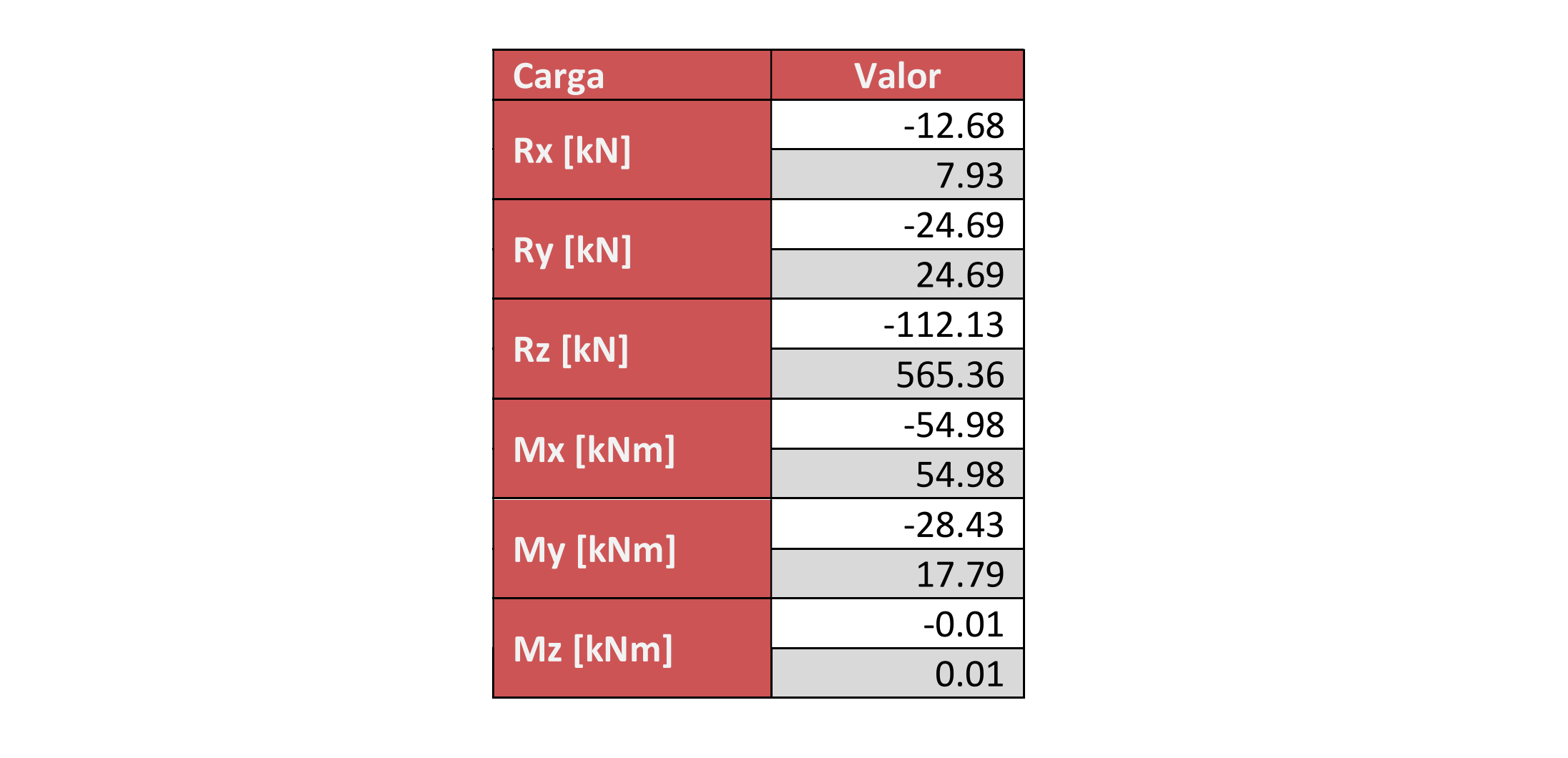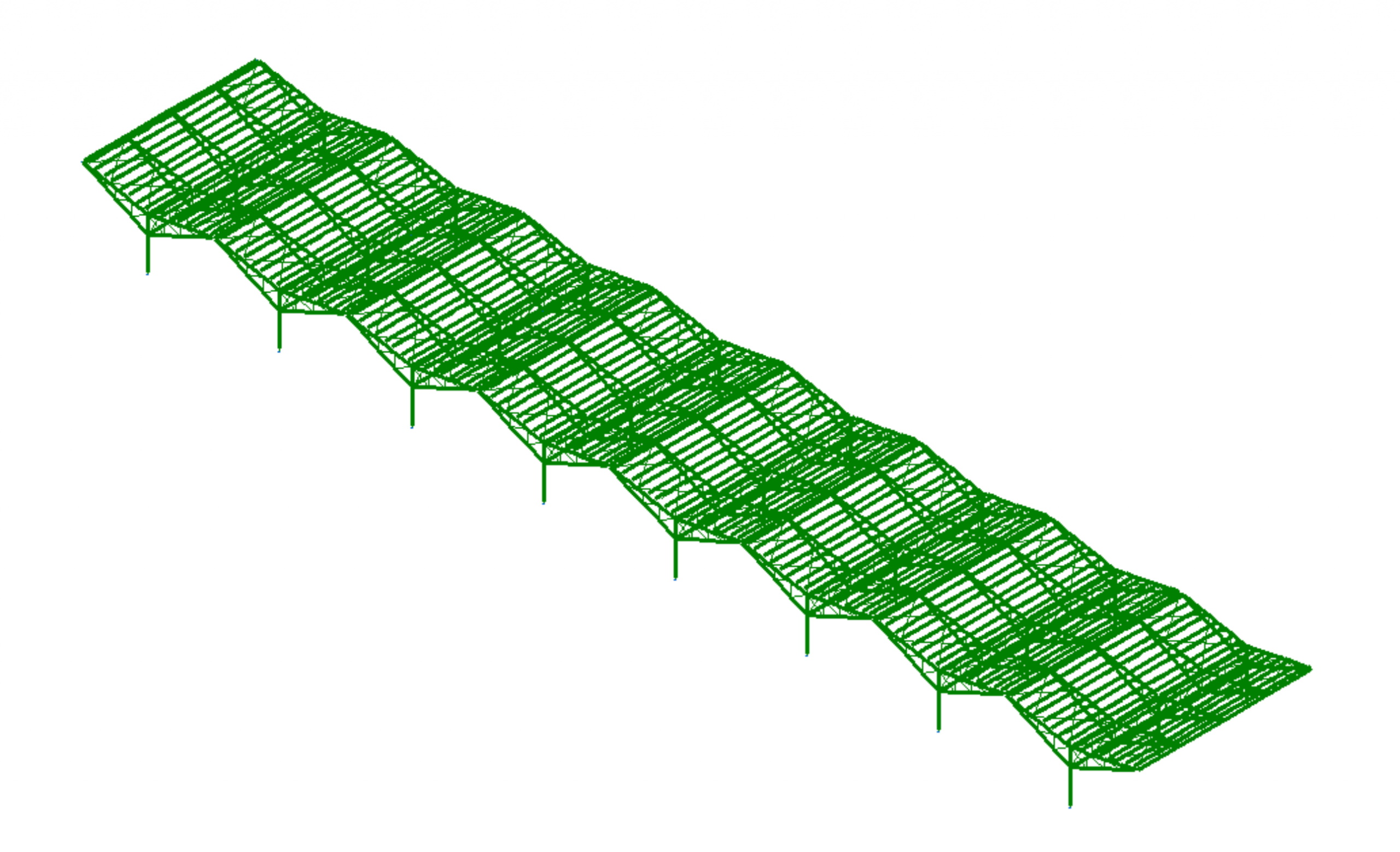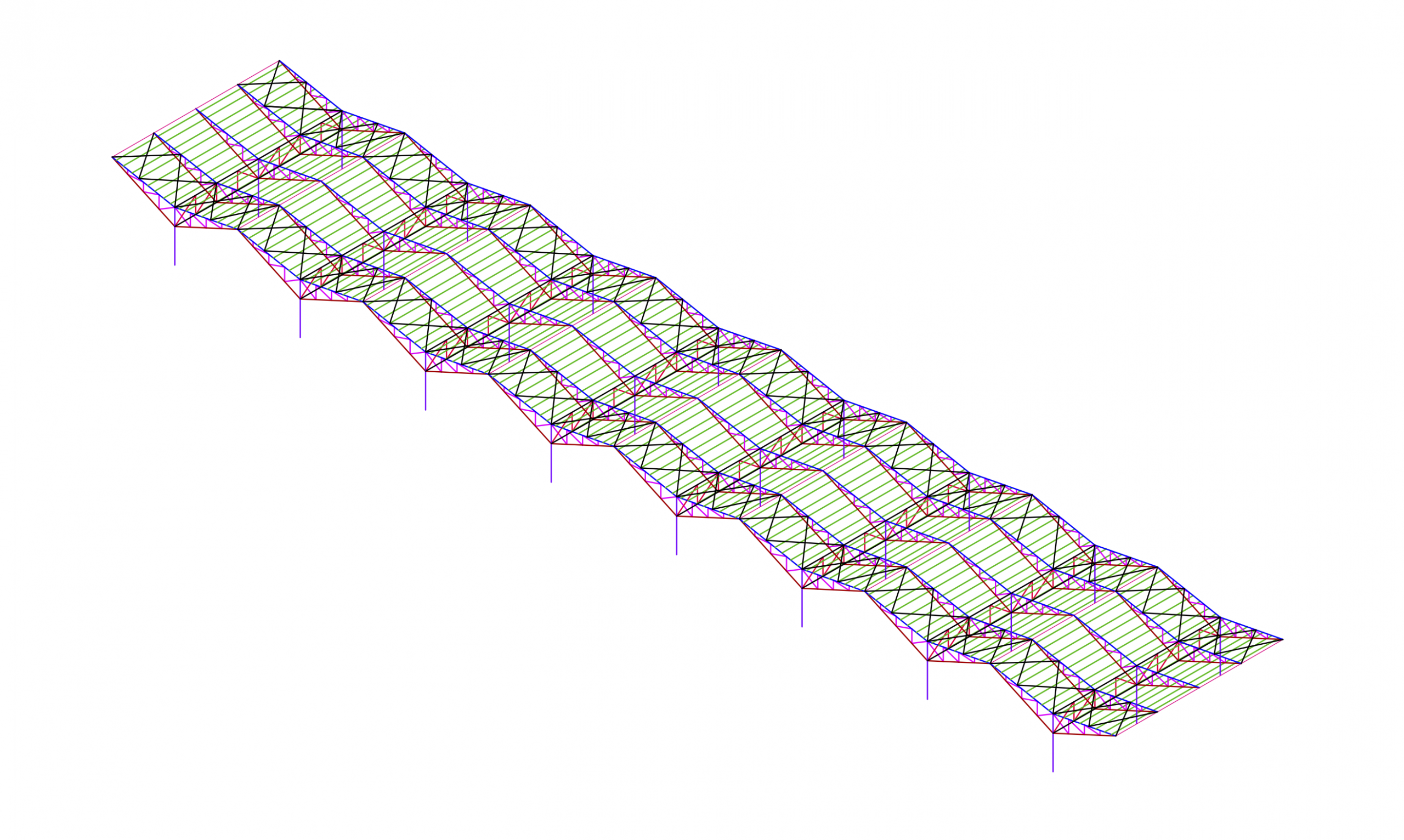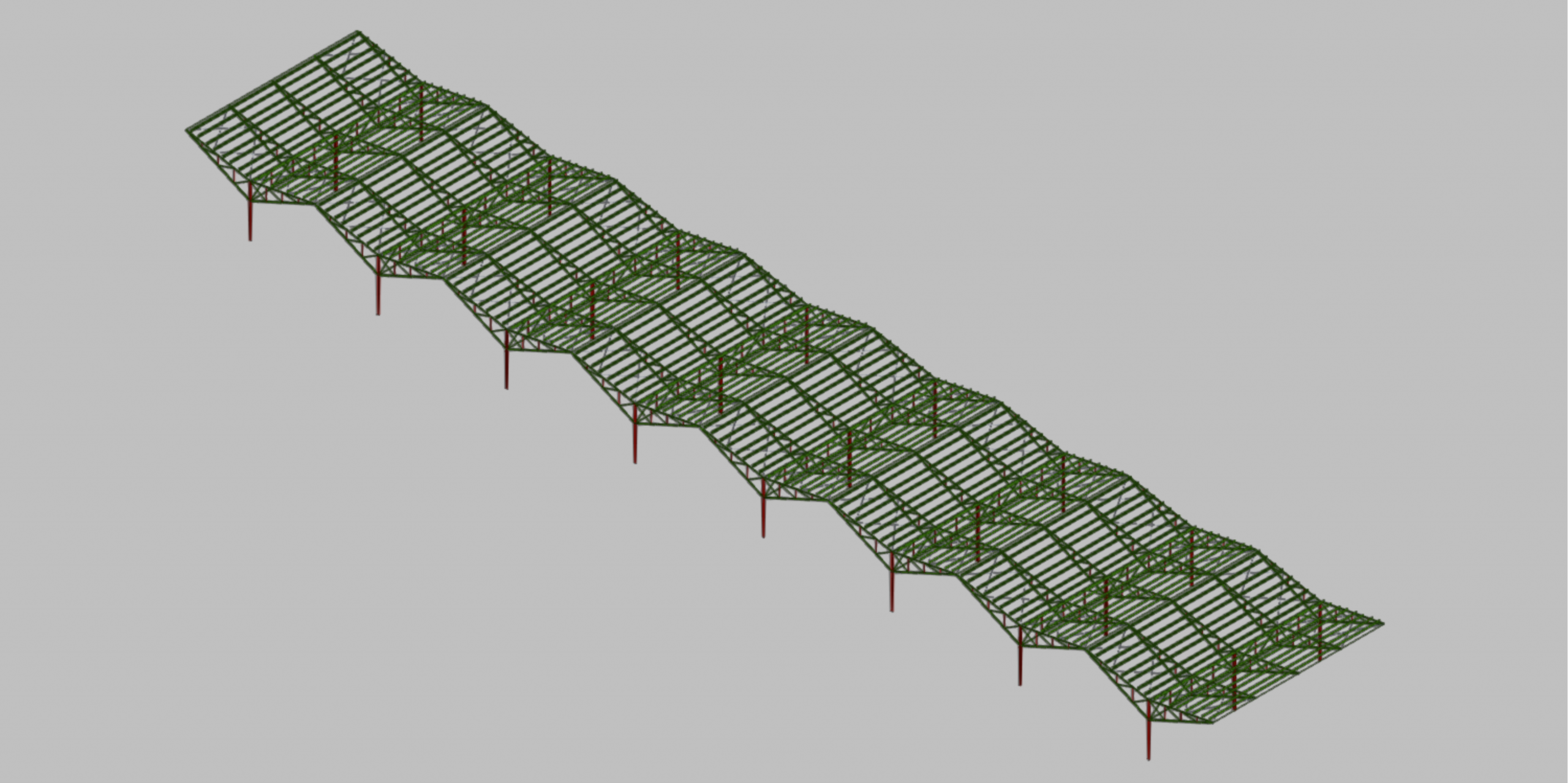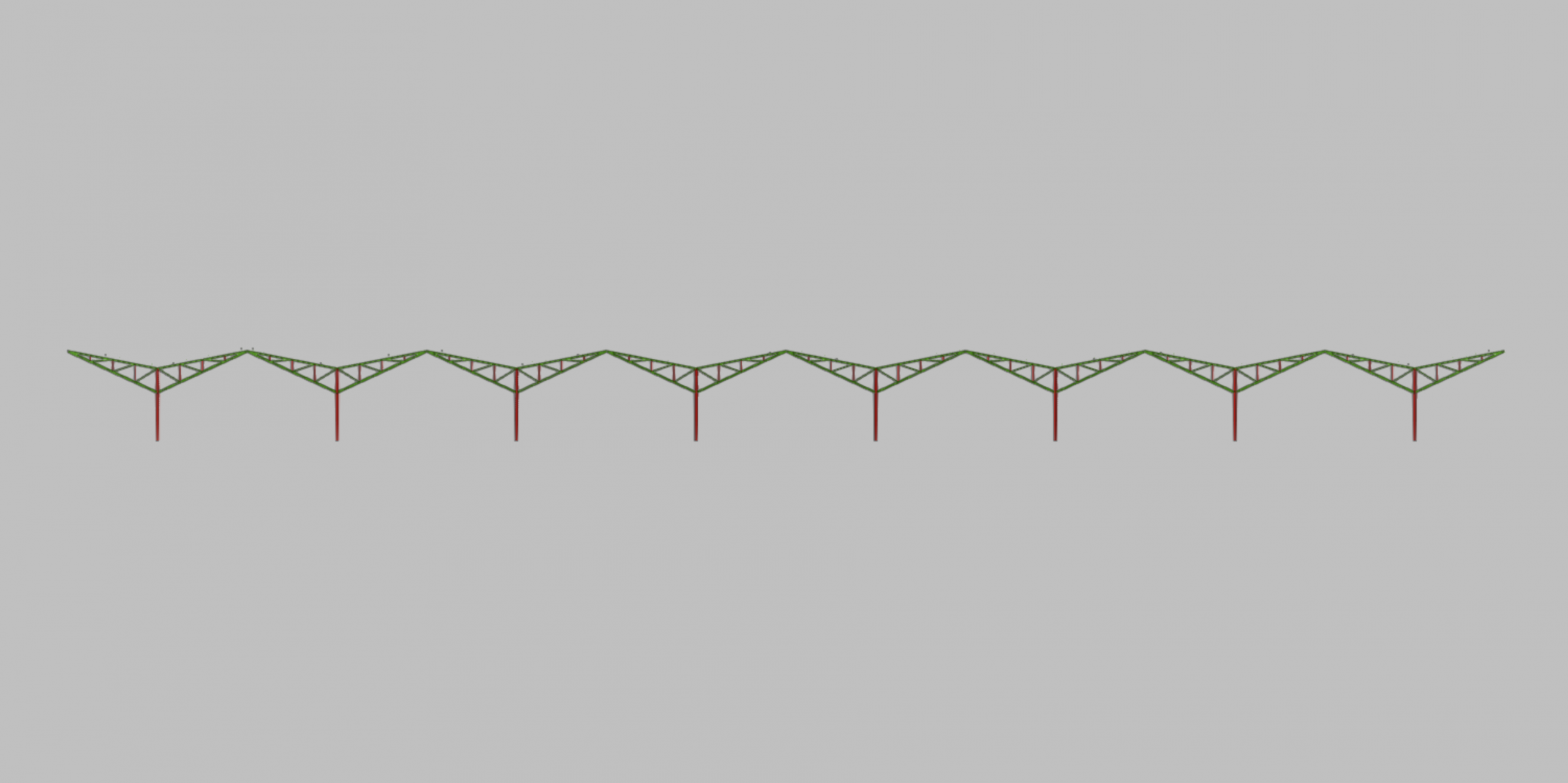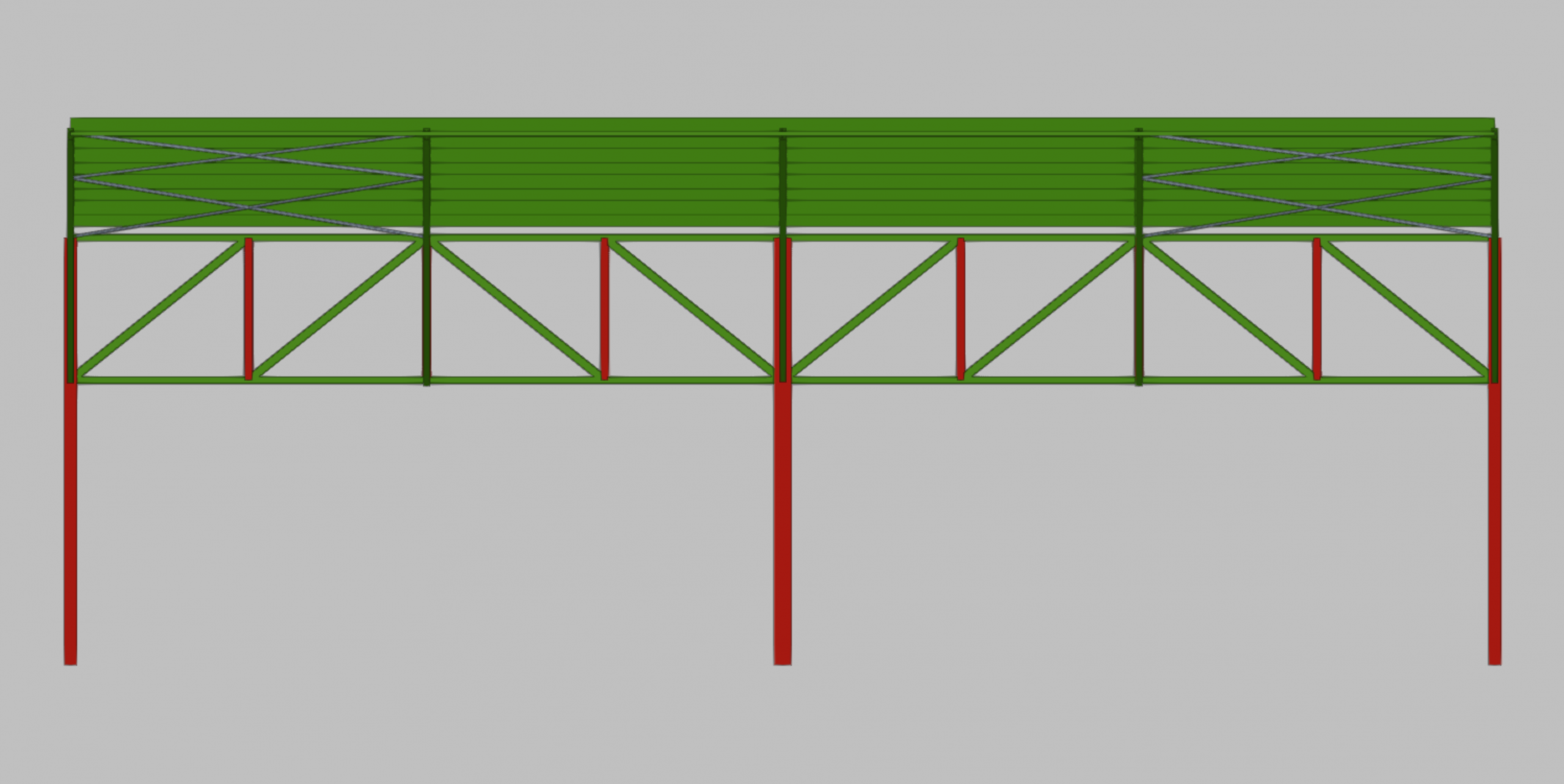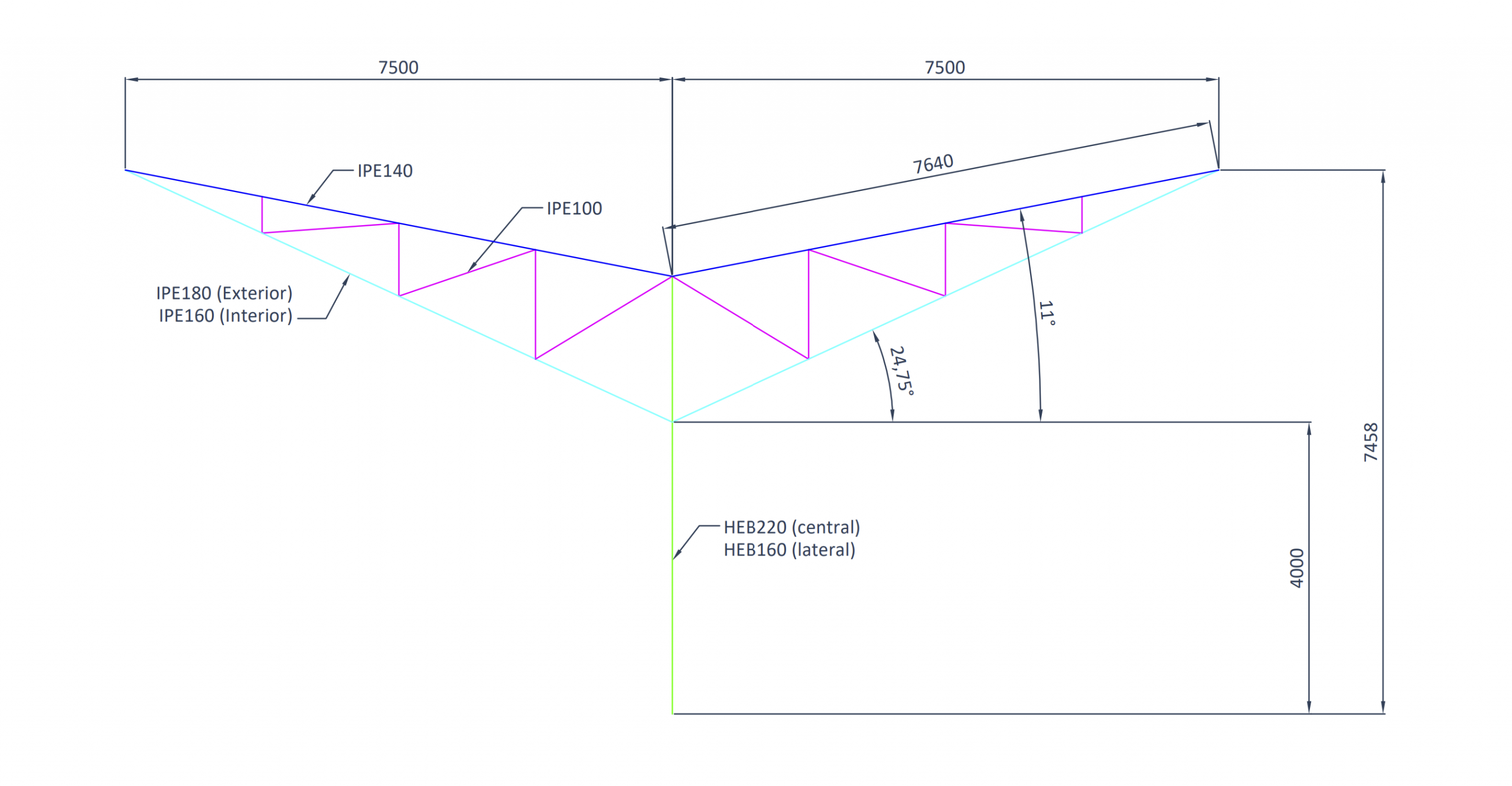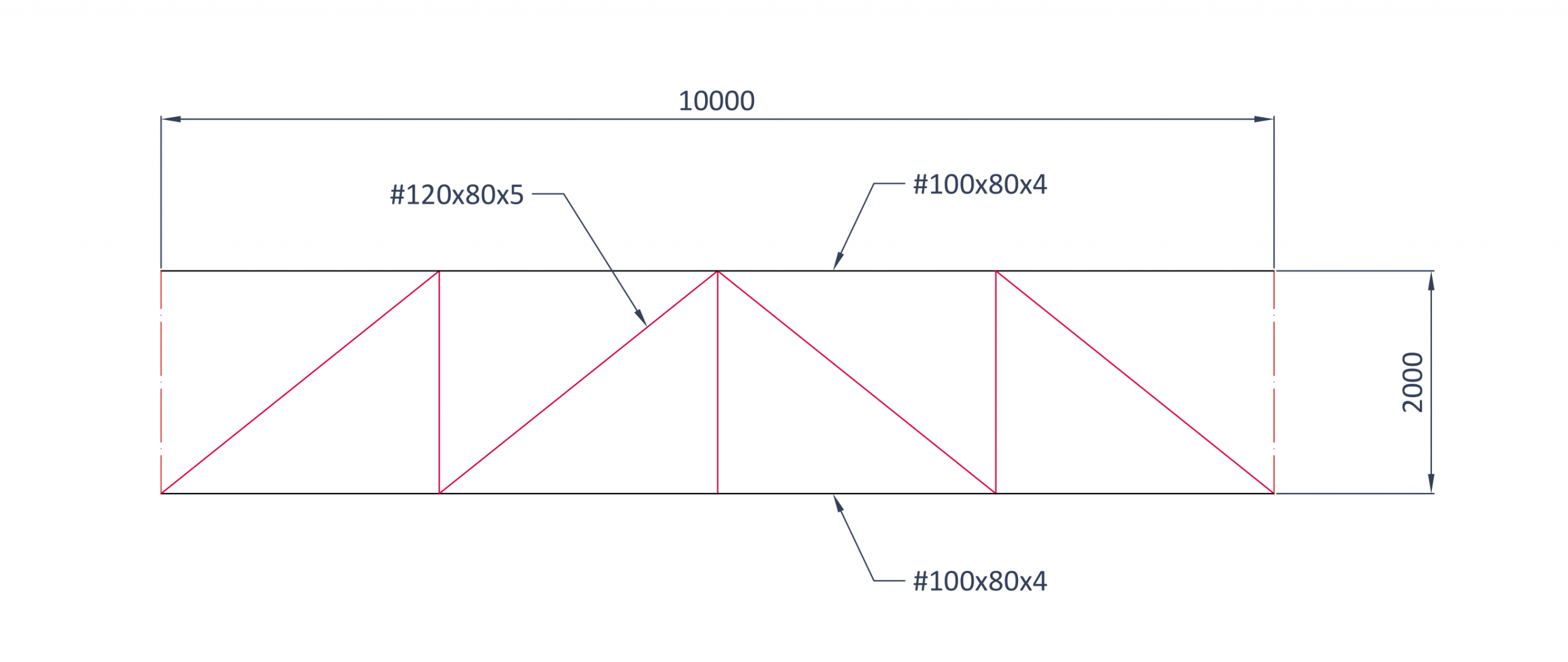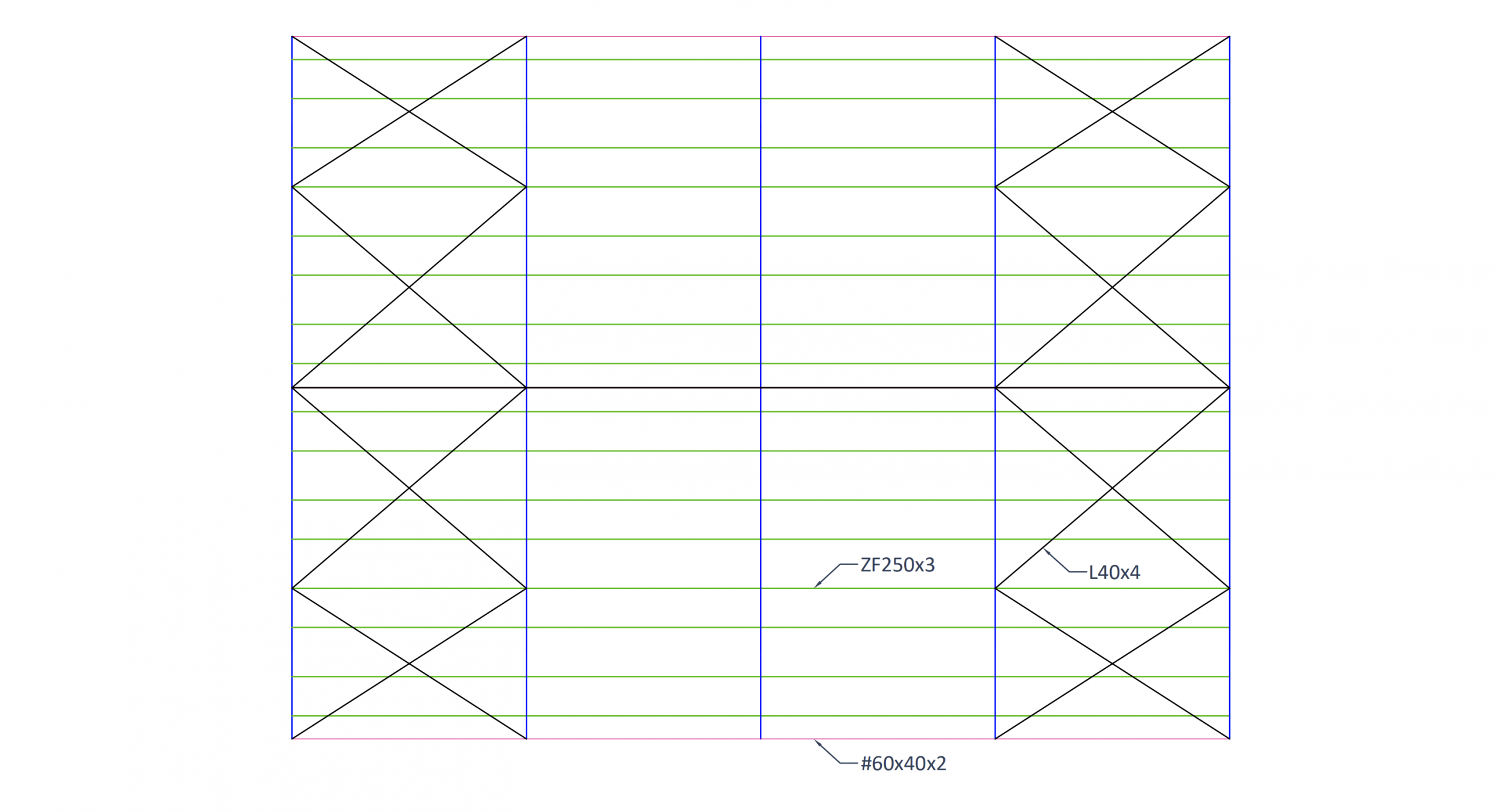General Information

Geometry
Loads
Basic wind speed ( v_b ) for this site is 24m/s. (Data provided by Eucomsa Cox-Abengoa).

Wind pressure according to Eurocode ( q_{ref} ), can be calculated as:
w = q_{ref} · C_e(z) · C_p
q_{ref} = \large \frac{1}{2} \normalsize \rho v_b^2
With \rho as wind density at 1.25kg/m³.
A structure with a maximum height of 7.5 meters and a terrain type II has been considered in the calculation of C_e (z) .
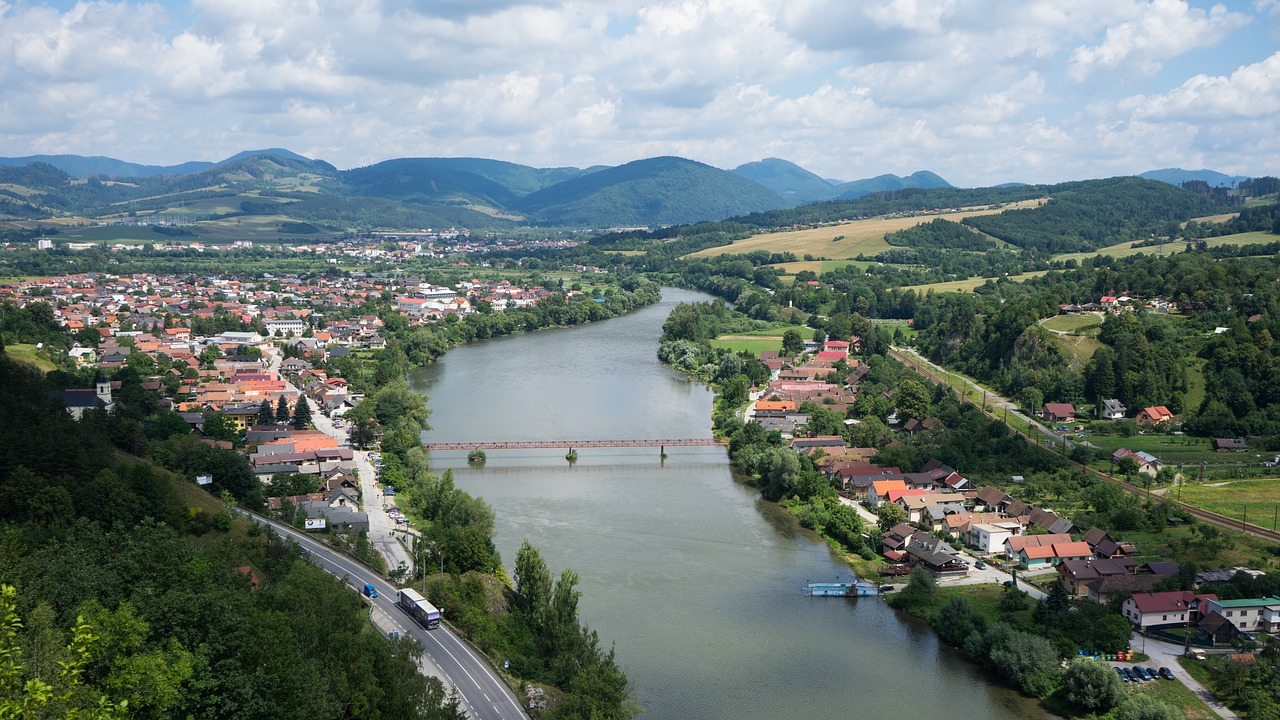

With these values, the parameter C_e (z) is 2.17.
The coefficients C_p will be taken from the case of an isolated troughed free roof, multiplied by the factors for multispan constructions:
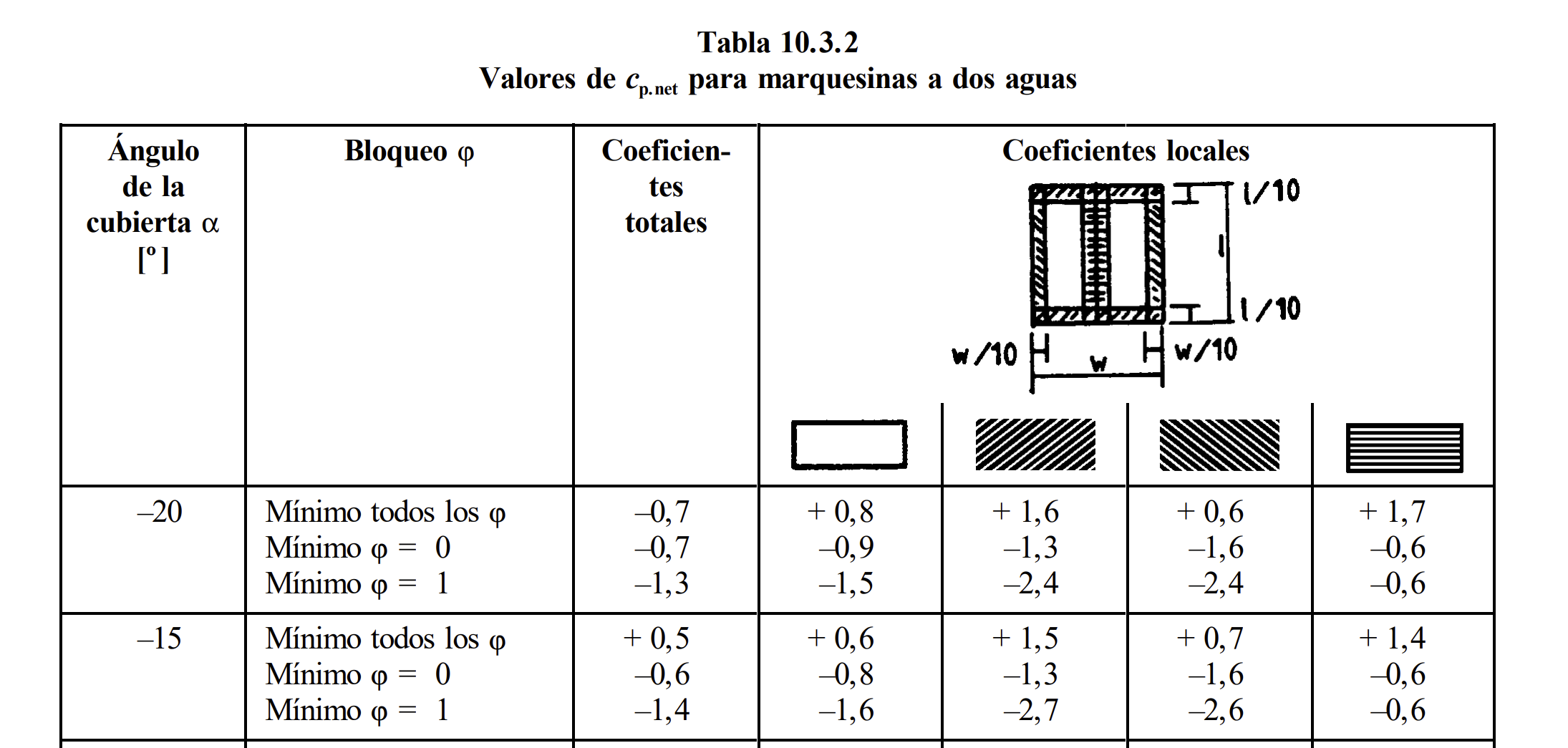

The snow load to be applied at the site ( s_k ) is 1.09kN/m² (data provided by Eucomsa Cox-Abengoa).
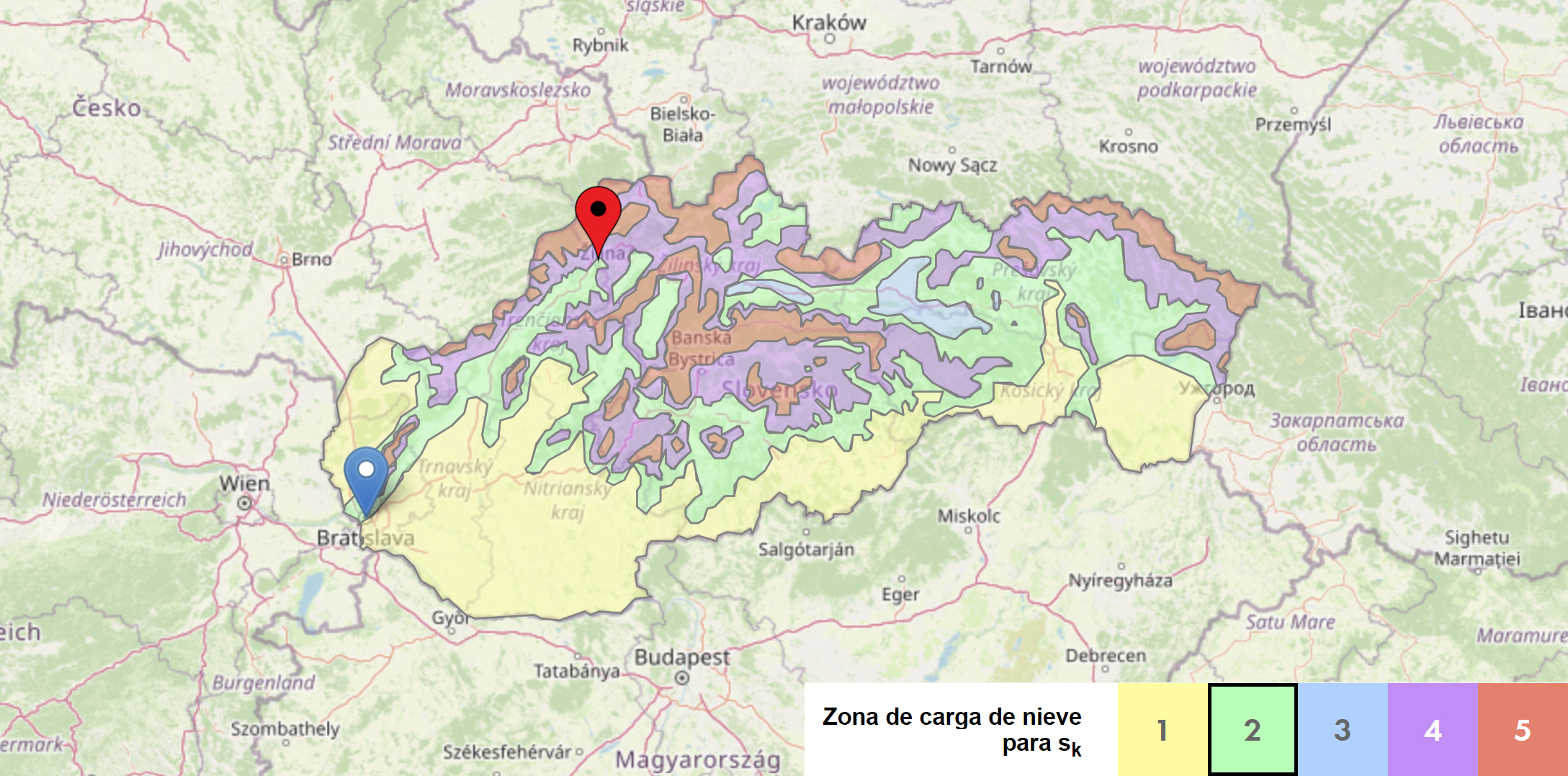
In addition, this value must be increased by the accumulation coefficient ( \mu ).



The values of ( \mu_1 ) and ( \mu_3 ) are 0.8 and 1.09 respectively for an 11º slope roof.
Therefore, snow has as a trapezoidal load whose lowest height is 872N/m² and whose highest height is 1,192N/m².
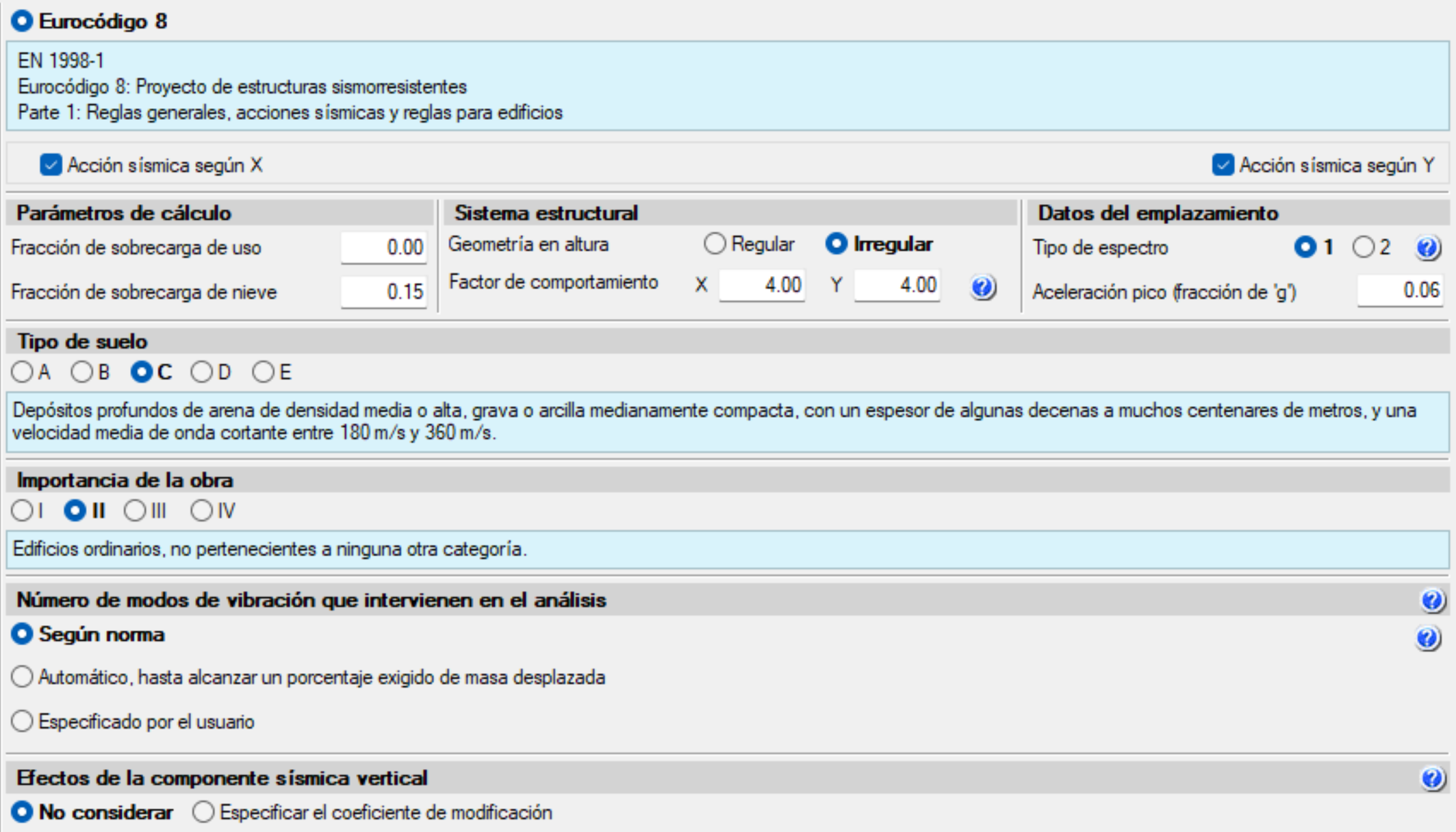
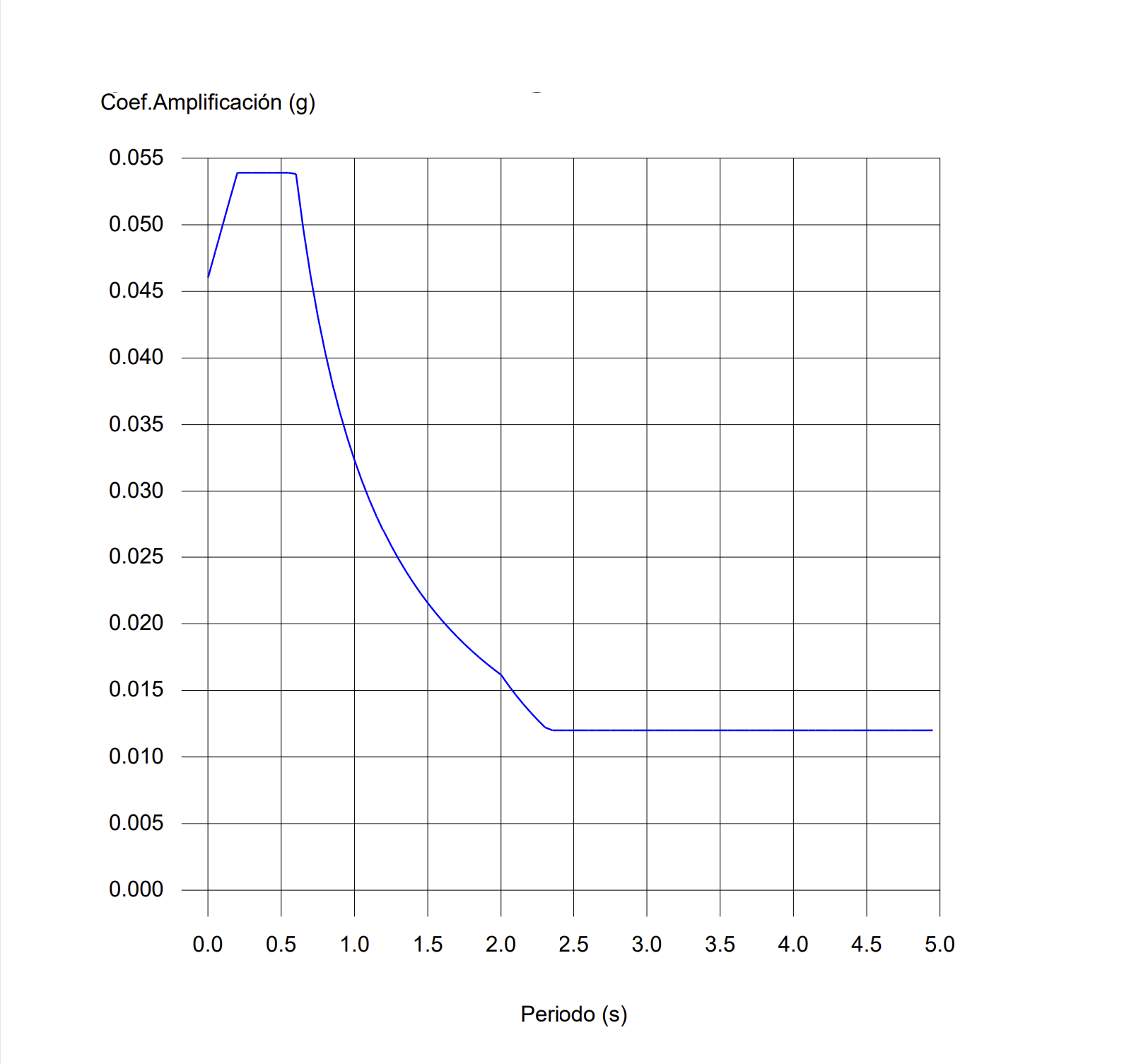

Results
